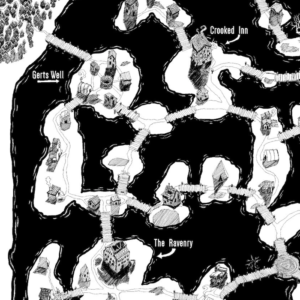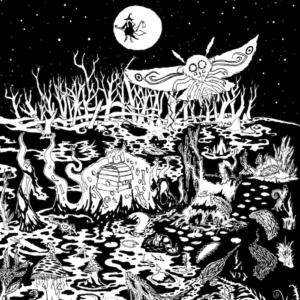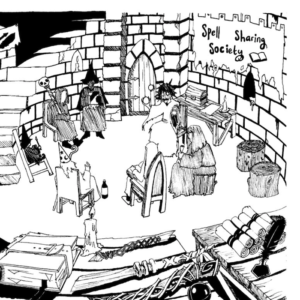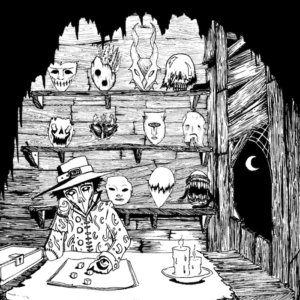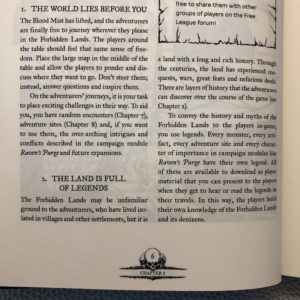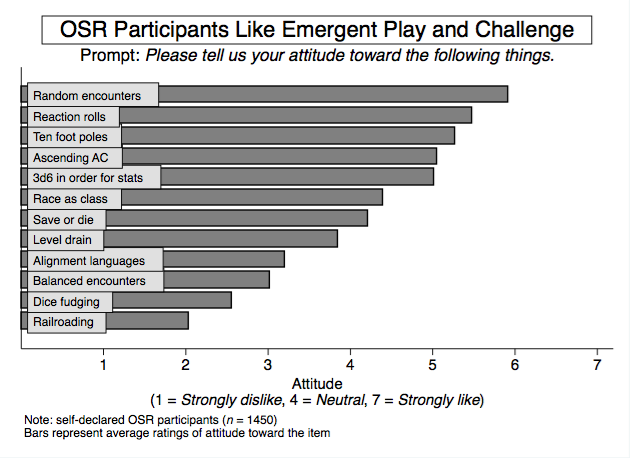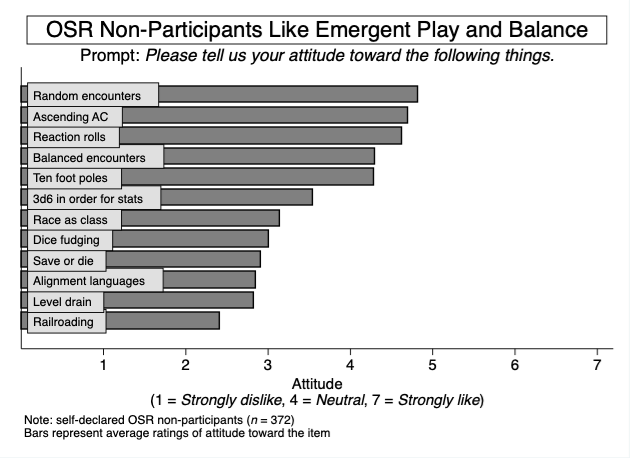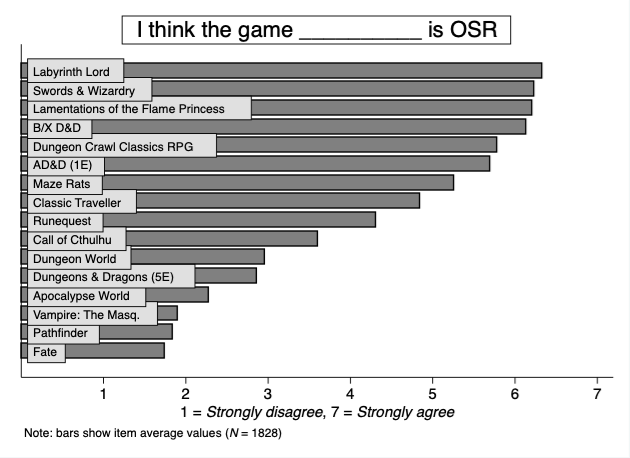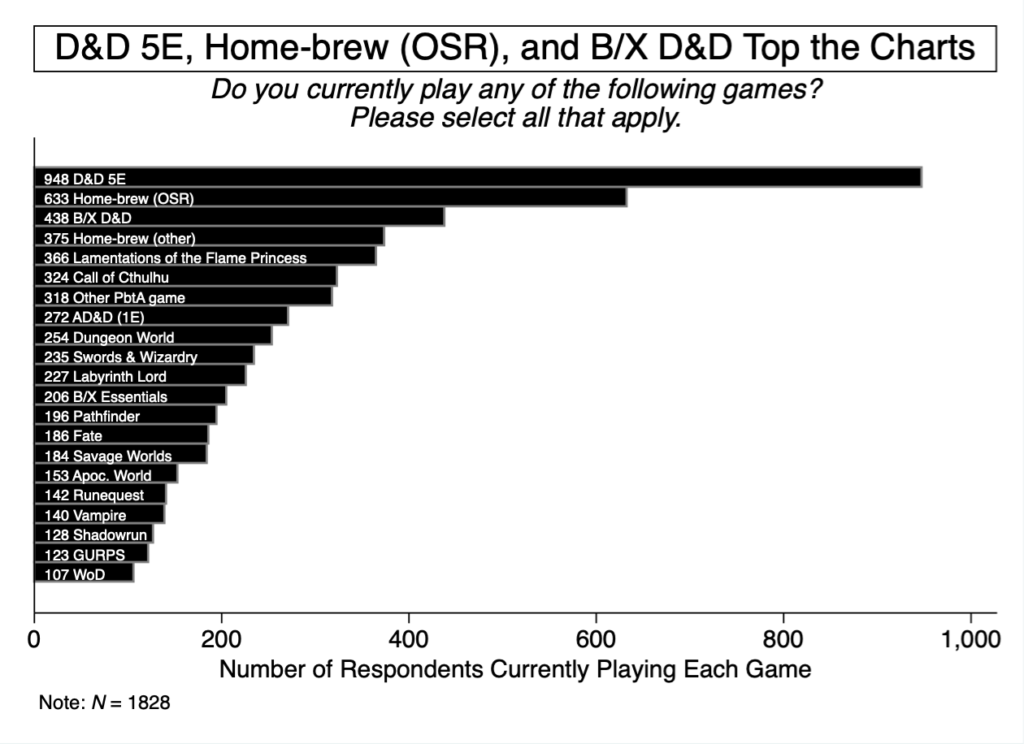Woodfall bills itself as a dark fantasy mini setting. I would describe it as a setting toolkit, inspired in form by Vornheim, but with less emphasis on content generation tools and much more emphasis on particular realized locales. There are more fish in this basket than manuals about how to fish or tools for fishing. I backed Woodfall based on the strength of the sample art, and if you appreciate the gloomy storybook aesthetic (which I do), the final product delivers on that dimension in spades. For the physical book, the format is roughly digest sized perfect bound (print on demand) softcover. Within are 32 pages describing the settlement of Woodfall, 11 adventure locales of several pages each, and nine pages of new monsters. There are also subsystems for harvesting resources from monster hunting and crafting items. The PDF is 96 pages including cover and everything. Overall, the writing is concise, though more functional than artful, and play usability looks high. The art is profuse and evocative. On the downside, Woodfall’s tone is saturated with unsubtle, somewhat distracting satire.
Though I described the writing as lacking artistry, the illustrations more than make up for any shortcoming in the prose, and on balance the writing is fine but unexceptional. In terms of visual style, I find Woodfall to be one of the more enjoyable independently produced RPG products to have come out over the past few years. Even just the map of the Woodfall settlement alone is a fantastic, memorable locale that faces off respectably against any other town I can bring to mind from other modules. Memorable settlements breathe life into hexcrawls, but remain scarce as supplements. Visual presentation grants elements that might otherwise be overly prosaic or tedious a gloss of game utility, such as a a diagram of economic resource flows, though proof of this potential will be in the play. The visual component of Woodfall was clearly a labor of love, and nothing feels phoned in. Woodfall’s second strength is unfailing attention to game utility, with consistently inventive and generally non-generic ideas. Much of the complexity lies in relationships between elements. For example, the presence of a particular non-player character in the wilderness dampens the danger from a particular monster. Players can learn about and make use of this fact creatively. Another, in the form of a wandering monster: gossip earfish lurk around the swamp listening in on conversations … have tiny mouths and communicate exclusively in very faint wispers [sic: caught a typo] (p. 74). These two examples only scratch the surface, and are the kind of thing that makes a module more than simply an exercise in stocking a map. The result is a rich, articulated framework that looks like it will respond in satisfying ways to player actions and choices.
That all sounds fantastic, but Woodfall does have one substantial weakness, which is a somewhat off key and inexpert sense of humor. Unlike Melan (see here for his review), I read Woodfall’s subtext as satirical rather than po-faced, more Addams Family than revolutionary vanguard. However, even tongue in cheek, the tone is a bit much and somewhat awkward. For example, the fairy liberation front—a resistance movement among faeries which fights against the enslavement and exploitation of faeries (p. 31)—is the kind of charming nonsense that often (inevitably?) emerges from table chat organically. I consider this to be a true shortcoming, rather than just an expression of my taste, and independent of any particular politics, because the players at my table (or yours) will readily add this finishing noise themselves, and it will be funnier, tailored as it will be to events of the moment and the idiosyncrasies of your table. Noisms’ post about D&D as straight man expresses a similar idea in a more general way.
A handful of other points deserve mention, both positive and negative. The hex map is usable and attractive but lacks coordinate numbers. The secondary locales are evocative and well-illustrated, but only lightly detailed, so referees that prefer more complex puzzles or challenges may feel poorly served (though as noted above, the relationships between the elements are rich with potential for exploitation by creative players). The swamp factions matrix—which captures alliances and enmities—is filled with mostly game relevant entries, but would be more useful with text labels accompanying the faction icons. As written, the setting of Woodfall secularizes sorcery in the presented setting, which tilts the atmosphere toward disenchantment. Curiously, this is at odds with the evocative illustrations. A referee running a low magic game will need to adjust descriptions accordingly. Finally, there are few crafting systems available for classic/OSR games, and the approach here, fully illustrated of course, looks both tractable and fun.
Personally, I consider the overbearing humor to be a venial sin, especially given Woodfall’s many other strengths. Unfortunately, the increased reliance on associative rather than deliberative thinking in the current intellectual climate means that many people will likely tune out before giving it a chance. Put another way, the badge of humorless activist boyfriend (to mangle Melan’s stamp of disapproval) may ruin what seems like an otherwise useful supplement for readers with condescension detection meters dialed up to full sensitivity. Ultimately, I think using Woodfall’s framework with modified tone and references would involve minimal hassle, even improvising at runtime, and offer substantial payoff. Considering the strengths and weaknesses of Woodfall, I wonder if there is a place for the module equivalent of silent cinema, supplements having minimal text that deliver content primarily through illustration and graphic design. Inventory v1 (my review) or A Land Called Tarot (AV Club review) could perhaps inform this kind of product.
Purchase info
- Date: 2018-07-11 (backed) & 2018-12-06 (POD order)
- Price: €15.00 + $5.62 CAD (at-cost POD softcover) + (a few more dollars for shipping) = $25-30 USD total
- Details: Woodfall: A mini hexcrawl setting Kickstarter project
See here for my approach to reviews and why I share this purchase info.

